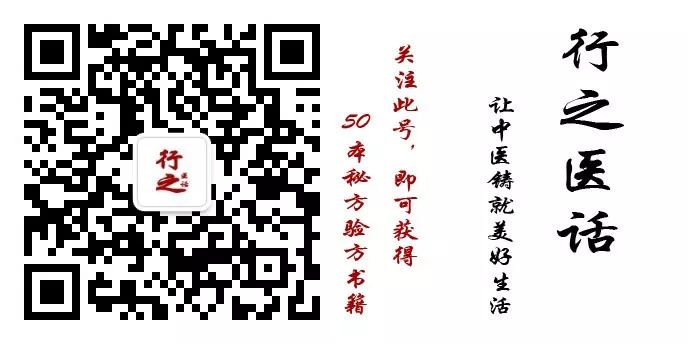【Free eBook at the end】
Fibroadenoma of the Breast (Rubi)
Authors: Xie Xincai, Wang Guiling
【Case Study】Case 1: Zhang, female, 23 years old, unmarried.Chief complaint: A mass in the right breast for over 3 months. Present illness: Three months ago, the patient discovered two masses in the right breast, each the size of a jujube. Recently, due to work stress, she often experiences discomfort in the chest, breast distension and pain, especially noticeable before menstruation, and sometimes shortness of breath and chest tightness. She visited a Western hospital and was diagnosed with “fibroadenoma of the breast,” advised to observe for a period, and if it continues to grow, surgical removal was suggested. The patient, fearing surgery, sought treatment.Observation: The appearance of the breast is normal, with no redness or swelling. Tongue: pale red, thin white coating. Pulse: thin. Physical examination: Two palpable masses in the breast, the larger measuring approximately 1.5cm x 2cm, smooth surface, movable.Diagnosis: Liver Qi stagnation and blood stasis. Acupuncture points: Zuqiao (足临泣). Needling method: Insert fine needles into the Zuqiao point using a reducing technique, retaining the needles for 30 minutes. Once every other day.After the acupuncture, the patient felt a sense of relief in the chest. After three sessions, the masses reduced in size, and after a total of 10 treatments, the masses disappeared.Case 2: Zhang, female, 41 years old.Chief complaint: A hard lump in the left breast for several years. Present illness: The patient has had a hard lump in the upper left breast for several years, initially the size of a jujube, which has gradually enlarged to the size of a walnut due to anger and emotional depression. Additionally, several small nodules have formed below, which are tender and movable, causing fear of malignant tumors, leading her to seek examination at a hospital, where she was diagnosed with “mammary gland hyperplasia.”�Observation: Complexion yellow, tongue coating white. Pulse: thin and wiry. Physical examination: A palpable mass in the upper left breast, approximately 3cm x 3cm, with several small nodules below.Diagnosis: Liver and kidney deficiency, liver Qi stagnation, and blood stasis. Follow us on WeChat for more insights on TCM. Treatment principle: Nourish Yin and support the kidneys, soothe the liver and relieve stagnation, warm and unblock the meridians, harmonize Qi and blood. Acupuncture points: Zhaohai (照海), Zuqiao (足临泣), local (Ah Shi points). Needling method: Insert fine needles into Zhaohai and Zuqiao points, tonifying the former and reducing the latter, retaining the needles for 30 minutes. Use fire needles with rapid needling technique, puncturing the masses with 3-5 needles (each mass). After two sessions, tenderness disappeared, and after a total of 8 treatments, the hard lumps basically disappeared, and treatment was stopped.【Commentary】This condition can be divided into three types: Liver Qi stagnation type is commonly seen in young women during developmental periods, where emotional fluctuations can easily lead to liver Qi stagnation, resulting in blood stasis and this condition. This type is considered a real pattern, and needling the Zuqiao point can help regulate the liver Qi, relieve stagnation, and eliminate the disease.The Liver and Kidney Yin deficiency type is often seen in middle-aged and menopausal women, where the physical constitution is weak due to childbirth or fatigue, leading to a deficiency pattern of both liver and kidney. Needling the Zhaohai point of the Kidney meridian can nourish kidney Yin. Follow us on WeChat for more insights on TCM. The Chong and Ren meridians imbalance type is commonly seen in menopausal women, where physiological changes often accompany various symptoms, presenting a mixed pattern of deficiency and excess. Therefore, Zhaohai point can be used to tonify, while Zuqiao point can be used to reduce, with one tonifying and one reducing, which has the function of regulating the liver and tonifying the kidneys. The Chong and Ren meridians are closely related to the liver and kidney meridians.Thus, tonifying the liver and kidneys also tonifies the Chong and Ren meridians. The local manifestation of this condition is the presence of masses in the breast. Fire needling can effectively disperse and eliminate stagnation, hence the efficacy of this technique.Clinically, based on the actual situation, all three types can utilize fine needling at distal points, combined with fire needling at local masses, for better clinical outcomes.
This article is excerpted from “Clinical Experience of National TCM Masters,” published by China Medical Science and Technology Press.
Yesterday’s review: An 80-year-old TCM doctor shares miraculous remedies that can achieve the effect of knowing two doses with one dose, verified by himself! Quickly save for your family. Originally a folk ancestral secret recipe, clinically applied by our experts for many years, it has proven to be effective, with a simple formula and low cost for acupuncture treatment of mammary gland hyperplasia and nodules, with a total effective rate of 95%. Renowned expert Liu Duzhou discusses treatment cases of femoral head necrosis. Famous TCM doctor Zhang Wentai effectively uses the prescription Shao Yao Gan Cao Tang for pain relief. National TCM master Zhu Liangchun shares his experience in treating various coughs, along with self-formulated effective prescriptions for hypertension. Traditional herbal prescriptions for TCM single herb efficacy.


